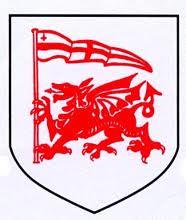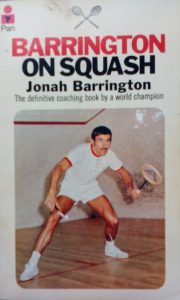Main Menu
Latest Blog Entry
User login
Fitness training for squash

How do I get fit for squash?
There are many ways, we have been lucky enough to have worked with some outstanding young squash players. Here is what we did with them to help improve their squash fitness.
Adi Jagtap (8th 2010 Junior world championships), Victoria Temple- Murray (TASS funded and winner of the Belgian under-17s open last weekend), and Fiona Murphy (3rd In Manchester open under-17s 2 weeks ago) to name a few.
Our System works the athlete from the ground up and outwards, but it is useful to know where to aim. Matt has done some recent research on squash fitness and here are his findings:
Squash is a moderate- to high-intensity intermittent exercise. Players are active 50 to 70% of the playing time. 80% of the time, the ball is in play 10 seconds or less.
The rest intervals fit a normal distribution with an average duration of 8 seconds. Heart rate increases rapidly in the first minutes of play and remains stable at approximately 160 beats/min for the whole match no matter what levels the players are.
However, the heart rates of players have been known to go right up the age-related max and thus can be deemed a maximal effort sport. The energy expenditure for medium-skilled players is approximately 2850 kJ/h and over 3000 kJ/h for top-level elite players.
Fitness training for squash
Squash is a fast-paced and dynamic sport, one that requires the technical ability and fine motor skills as well as the physiological capacity of an endurance athlete. It has actually been stated that the endurance of a squash athlete should be like that of a 5K runner.
The general training routines of squash players should therefore be focused on interval training. It should be conducted at 75-85% max heart rate. Generally, this interval training should be 200m at around 35-40 seconds each as well as 400m at around 90-110 seconds. Now there is a famous squash interval program that was conducted by Geoff Hunt who would work 26 x 400m at 75s and then rest for 60s.
Squash agility
The squash movement is akin to that of tennis, purely in the sense that you are supposed to or the best technique is to move back to the ‘T’. Therefore speed and endurance as mentioned above are crucial.
However, due to it being such a small court having the ability to move laterally is also very important especially in regards to limiting injury. This video shows an example of how to develop lateral agility:
The speed work is very important in terms of basic physiology because if the running is slow it will increase capillarization (blood supply) around the muscles. That is why the running should take place around the anaerobic threshold, which increases the body’s utilisation of glycogen as a fuel.
The dimensions of a squash court are 32 ft (9.75 m) long and 21 feet (6.4 m) wide and therefore in terms of speed, acceleration is very important.
Regaining your balance
Journals have mentioned that in terms of biomechanics squash players have one dominant hand because, unlike tennis or baseball, for instance, they only use one hand for the duration of a match, due to the pace of the game.
Mahoney and Sharp (1995) reported an asymmetry in grip strength with the dominant limb being 13% stronger than the non-dominant limb.
Therefore when it comes to actual strength training a squash player, make sure that this is monitored as to not cause injury or even complete dominance. Dumbbell work is great as it works both sides evenly.
For example, in golf, they can play both left and right-handed to make sure the muscles in their back do not become lop-sided. The tension of a squash players racket must be adjusted to allow for this continual use of the one hand and that is why in older players the strings are stronger to allow the racket to do more of the work.
Jonah Barrington’s Coach Nasrullah Khan told him that he must “Devil up his muscles” and prescribed his weight training exercises 3 times a week.
Specific Drills
In terms of actual training as specified in the ‘Squash player,’ there are a few drills that are squash specific that would help with strength and more importantly getting into the correct position and having the ability to hold that position deep into the match. Using a dumbbell in both the right and left hand you will lunge through a squash position, which would happen often during a match.
Or you can use this sequence of lunges to help maintain symmetry and mobilise the thoracic spine and shoulders.
Overall there are squash fitness-specific drills that can be used to help with the development of younger athletes and the more experienced:
- Trunk strength: to allow control of the shot.
- Muscular strength: to allow control of the lower limb in this shot, and cope with acceleration and deceleration forces.
- Muscular endurance: to allow this work to be repeated as the match goes on with no loss of control or speed.
Get fit for Squash now…
If you want more advice, then book in and train with us.
Or read our guide to pre-season fitness training
Matt Brookland
Client Testimonials
 London Welsh RFC
London Welsh RFC
James has provided a wealth of experience and expertise to the Academy set up at London Welsh RFC in recent years. He has addressed both the physical and mental development of the players through innovative, player and position specific programmes which have resulted in each individual within the group developing towards their potential.
More



Comments
[…] of the young players work hard on their athletic development and their squash fitness. They should make the transfer to senior ranks if they carry on like […]
[…] Fitness training for squash What squash requires, examples of work we have done, video of lunge strength […]
[…] benefitted a lot through James’ training regimes because strength and general fitness is a big part of squash and I feel that my game really moved up to the next […]
[…] former university lecturer Professor Craig Sharp links elite footballers to squash players in saying that they are very impressive in this fitness […]
[…] Fitness training for squash […]